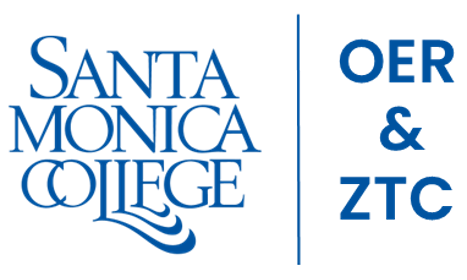Lesson 15: Intellectual Property Theft and Intellectual Property Protections
Introduction

“Ownership” by Mike Cohen 1872 is licensed under CC BY 2.0
Intellectual property rights concern the legal ownership and use of intellectual property, such as software, music, movies, designs, written stories, and ideas.
Each time you use software, listen to music, read a book or newspaper article, see a movie, or sit in a comfortable chair, you are enjoying someone else’s intellectual property. The most valuable intellectual properties are typically the result of years invested in study and training. The sale of access to intellectual property provides an income for the creator and a return on his or her investment.
Intellectual property laws have been designed to legally ensure the rights of ownership to those who have created intellectual property. The digitization of intellectual property and widespread Internet use have made it very difficult to protect intellectual property from illegal distribution.
In early 2012, an intellectual property battle erupted over two pieces of U.S. legislation: PIPA (PROTECT Intellectual Property Act) was a bill floated in the Senate, and SOPA (Stop Online Piracy Act) was in the House. Both bills would have allowed the U.S. Department of Justice to seek court orders requiring Internet service providers, search engines, and online financial services to block websites that were accused of infringing on copyright. Sides were drawn between representatives seeking to protect the rights of businesses whose intellectual property was threatened and those who feared the bill would represent a significant step toward government censorship of web content. Groups protested the two bills across the country. Many websites blacked out for a day to call attention to the potential consequences of the bills. Ultimately, public pressure won out, and the bills were shelved—at least for the time being. A year later, the Cyber Intelligence Sharing and Protection Act (CISPA) was proposed, and some believed it to be another attempt at strengthening digital piracy laws. Once again, there was a call for an Internet blackout, but this time, few participated. Like net neutrality, laws regarding intellectual property will continue to swing back and forth, favoring corporations one year and consumers the next, depending on which political party holds office.
What negative impact do you think SOPA/PIPA would have had on the Internet and the content available there? As you read this unit, consider actions or laws that you would recommend to protect intellectual property online.
Intellectual property refers to a product of the mind or intellect over which the owner holds legal entitlement. Intellectual property includes the design of physical products as well as ideas and intangible objects such as poetry, stories, music, and new ways of doing things or making things. All forms of intellectual property have value and are owned by an individual or organization.
Because software and so many other types of intellectual property (books, music, movies, photos, works of art, etc.) are stored digitally, it is easy and convenient to copy and distribute them, sometimes without considering the creator. In the view of the creators and owners of the intellectual property, this is theft, just like stealing a physical item, such as an iPhone.
When intellectual property is copied and distributed by the public rather than by the legal distributor, it dramatically impacts the amount of money earned by the owner of the intellectual property. Rather than selling thousands of copies for thousands of dollars to thousands of fans, an artist might only be able to sell hundreds of copies for hundreds of dollars to hundreds of fans, who then make thousands of copies available to their friends. When those who own intellectual property no longer control the distribution of their product, they can no longer earn a living, they will turn to some other career, and creative capital in the country may wither.
Others argue that intellectual property is overpriced and that those who manage the industry, such as recording and motion picture companies, are making a killing while the intellectual property creators, who have signed away the rights to their intellectual property to the corporations, are given only a small percentage of the profits. It is this point of view that has driven many musicians to resist signing recording contracts and instead make their own recordings independently and sell them directly to their fans.
Digitization, the Internet, and a general failure to protect intellectual property have combined to create serious issues for the software, music, photography, art, motion picture, and publishing industries, and they are dramatically altering the way these industries operate.
Protection of intellectual property can take many forms, including copyrights, trademarks, trade secrets, and patents.
Legal Tools for Protecting Intellectual Property
|
Protection |
Description |
|
Copyright |
Protects the words, music, and other expressions for the life of the copyright holder plus 70 years. The fair use doctrine describes when and how copyrighted material can be legally used. The Digital Millennium Copyright Act provides global copyright protection. |
|
Trademark |
Protects a unique symbol or word used by a business to identify a product or service. |
|
Trade secret |
Protects secrets or proprietary information of individuals and organizations as long as the trade secret is adequately guarded by those individuals and organizations. |
|
Patent |
Protects an invention by giving the patent holder a monopoly on the use of the invention for 20 years after the patent application is submitted. |
Some believe that copyright laws are too restrictive and pose a risk to the advancement of culture. For example, in his book Free Culture: How Big Media Uses Technology and the Law to Lock Down Culture, Professor Lawrence Lessig and his colleagues developed a legal alternative to copyright called Creative Commons, which allows intellectual property owners to more finely describe what and cannot be done with their work.
Intellectual property theft extends beyond digital media. As cyberwarfare and cyberespionage have become a common component in international relations, intellectual property has become a major target. In recent years, dozens of attacks have targeted national defense contractors, corporations, and manufacturers, stealing valuable research and development information that could be used to compete economically or militarily. Many of these attacks have been traced back to determine their origins. Some security firms have pointed to China as a likely culprit; others say the evidence on the source of attacks isn’t clear.
Lesson 15.1: Intellectual Property Theft
Lesson 15.1 Introduction
The concept of stealing intellectual property is far more subtle and difficult to define than the theft of physical goods. You wouldn’t steal a car, but is copying a song really theft? The debate over the limits of intellectual property rights in the digital age is nearly as old as digital computing itself. Some would argue that copying a file can’t be considered theft because the original file is still accessible and no worse for wear after being copied. Others argue that it’s not the value of the file itself at risk but the loss in potential future revenue for the file’s creator. But what about copyrighted works created by artists who have already died? What about the increase in knowledge and cultural value when works are released into the public domain? Clearly, before we can have a meaningful discussion about intellectual property rights, we must define what intellectual property is and what it means to steal it.
Reading: Piracy
Piracy involves the illegal copying, use, and distribution of digital intellectual property, such as software, music, and movies.
Why This Matters
The music, motion picture, and software industries claim to be losing billions of dollars in sales to piracy. Piracy ranges in degree of severity, from a teenager downloading or uploading music on the Internet to a Chinese merchant selling hundreds of pirated commercial CDs and DVDs each day. The prolific amount of piracy is forcing technology industries and governments to react with repressive technologies, and legislation that some feel inhibits the natural evolution of culture.
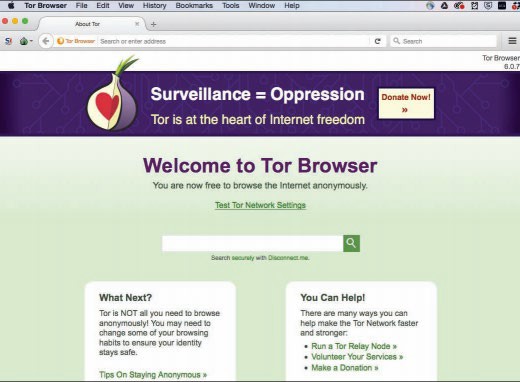
The Tor Project, Inc. Fair Use
Essential Information
Pirated software, music, and videos can be accessed through peer-to-peer networks such as BitTorrent or on the dark web, where Internet connections are anonymous, and web content is not indexed by search engines. These networks are rife with malware, adware, and hackers and are dangerous to use, but because the technology encourages file sharing, many otherwise law-abiding citizens might feel as though it must be okay.
Organizations such as the Recording Industry Association of America (RIAA), the Motion Picture Association of America (MPAA), and the Software & Information Industry Association (SIAA) are making it known that piracy is not okay. The RIAA has been successful in shutting down or helping shut down most P2P services, including Kazaa, Limewire, and Pirate Bay. The RIAA is continuously pursuing methods for discouraging and penalizing copyright violations. The RIAA has also been instrumental in promoting legislation, such as SOPA, PIPA, and “three-strikes” laws around the world. These highly controversial laws deny users Internet access if they are accused of copyright violations three times.
Although the MPAA has not engaged in lawsuits to the same extent as the RIAA, it is gradually ramping up its efforts as movie file sharing is becoming more common. The SIAA’s Anti-Piracy Division has taken similar measures in its comprehensive, industry-wide campaign to fight software and content piracy.
International piracy is of great concern to those in the music, motion picture, and software industries. The vast majority of motion pictures sold in Russia are pirated. In Vietnam, China, and Ukraine, most software in use is pirated.
The Anti-Counterfeiting Trade Agreement (ACTA) has been proposed by the United States, the European Community, Switzerland, and Japan as an international effort to fight counterfeiting and piracy. While still under debate, many fear that the agreement will infringe on consumers’ privacy and civil liberties in its efforts to reduce counterfeiting and piracy.
Reading: Plagiarism
Plagiarism involves taking credit for someone else’s intellectual property, typically a written idea, by claiming it as your own.
Why This Matters
Giving credit where credit is due and respecting intellectual property rights are foundational principles of ethical behavior. Laws, conscience, and social pressure discourage most people from plagiarizing—but convenience sometimes wins out over ethics, and rationalizations can blur the line between plagiarism and the creative use of others’ work. Utilizing plagiarism out of convenience or rationalizing that a minor offense isn’t ethically wrong ends up placing otherwise law-abiding people in very embarrassing and sometimes costly situations.
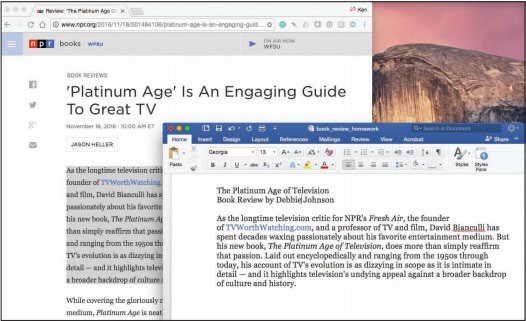
Webpage: NPR.org; plagiarized document created by Ken Baldauf as an example only. Fair Use
Essential Information
Plagiarism has been an issue of legal and social concern for as long as people have produced intellectual property. Stealing others’ ideas and thoughts and presenting them as your own is a serious breach of ethics, matched by serious penalties if you are caught. A student caught submitting another person’s work for a grade may face expulsion. A professional journalist, author, or researcher could face an expensive lawsuit and loss of a career.
Although plagiarism has been a social issue for a long time, the digitization of the written word, the Internet, and cut-and-paste methods of writing have made it all the more common. Some websites provide students with free research papers for class projects. Submitting papers from such websites is considered plagiarism and is subject to strict and severe penalties by schools. Software such as Turnitin and iThenticate is used by many high school and college teachers to find instances of plagiarism in electronically submitted homework files with a high rate of success. Some students find it useful to check their work for accidental plagiarism prior to turning in an assignment.
Lesson 15.2: Intellectual Property Protections
Lesson 15.2 Introduction
Digital media is a massive industry, with billions of dollars generated annually. With this much money in play, the question of the limits of intellectual property protections afforded by the law becomes hugely important, and huge sums are spent to lobby lawmakers for favorable legislation on both sides. For better or worse, laws with far-reaching implications have been passed over the past three decades that will continue to influence Internet culture for years to come.
Reading: Digital Rights Management
Digital rights management, or DRM, is a technology that protects digital forms of intellectual property by restricting the number of devices and applications on which a file can be opened and the number of times that the file can be copied.
Why This Matters
Intellectual property owners will do whatever it takes to protect their property from being illegally copied and distributed. The most popular method of protecting it is through DRM. DRM can be found in some music sold online as well as in movies, ebooks, and documents stored in PDF format. Most music and movie fans are frustrated by the inconvenient side effects of DRM, which keep them from listening to or viewing legally purchased products whenever and wherever they like on any of their devices. There is concern that restrictions on digital products may become tighter, pushing DRM onto hardware so that it is impossible to make copies of any digital media.
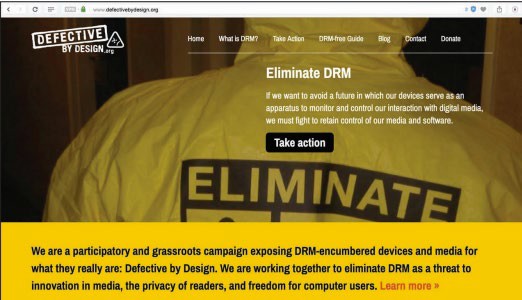
Defective By Design. Fair Use
Essential Information
DRM is often associated with digital audio files but is used with other forms of online intellectual property, such as digital movies and ebooks. Microsoft’s WMA and Apple’s AAC file formats include DRM technology. DRM-protected AAC files use the .m4p file extension. Users who purchase songs online may or may not receive files with DRM. There are restrictions on what players can be used with DRM-hobbled files and how those files can be copied. DRM has become extremely unpopular with consumers.
Defective by Design, a grassroots organization (see the Detective By Design figure) has campaigned to “eliminate DRM as a threat to innovation in media.” Most recording companies and music distributors now sell music without embedded DRM technology. However, DRM is still heavily used to protect motion pictures, television programs, ebooks, and documents.
Reading: Digital Millennium Copyright Act
The Digital Millennium Copyright Act (DMCA) is a U.S. copyright law designed to reduce illegal digital media copying by criminalizing the production, distribution, and use of technologies designed to circumvent DRM technologies.
Why This Matters
Digital media companies and organizations, such as the Recording Industry Association of America (RIAA) and the Motion Picture Association of America (MPAA), have aggressively lobbied the government to create stronger laws to prevent people from making illegal copies of digital forms of intellectual
property. In 1998, that lobbying paid off when the Digital Millennium Copyright Act was made law. In cases such as this, where laws are created that oppose common public practice, it is common for public unrest to grow around the issue. This is certainly the case for the DMCA. A Google search reveals many anti-DMCA websites and organizations. Other companies, like DMCA.com, provide services to help enforce the DMCA.
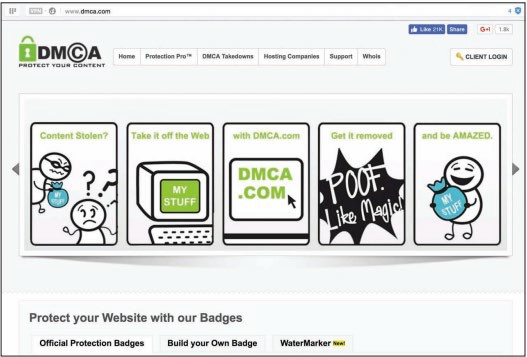
DMCA.com. Fair Use
Essential Information
On October 12, 1998, the U.S. Congress passed the Digital Millennium Copyright Act, and two weeks later President Clinton signed it into law. Since then, the DMCA has been used as a basis to shut down P2P file-sharing technologies, threaten thousands of people who have posted other people’s intellectual property on the web, impose serious fines on those caught sharing music and movies over the Internet, and even threaten to take down web-giant YouTube.
The Electronic Frontier Foundation (EFF) claims that the DMCA has unintended consequences, including impeding scientific research, jeopardizing “fair use” of intellectual property, and discouraging competition and innovation. Still, the record companies and the motion picture industry praise the DMCA for enabling them to enforce copyright law and rein in runaway piracy.
The DMCA was designed to implement treaties signed in December 1996 at the World Intellectual Property Organization (WIPO) conference in Geneva, Switzerland. The law makes it a crime to circumvent antipiracy measures built into most commercial software. So, those who purchase movies, music, ebooks, or other digital media that include DRM are breaking the law if they make copies. Also, the DMCA outlaws the manufacture and distribution of software or hardware designed to crack DRM codes. In addition, the DMCA holds Internet service providers responsible for pirated content stored in user accounts on their servers.
The DMCA also holds Internet radio companies and other webcasters responsible for paying those who hold the rights to the intellectual property being broadcast. This, in turn, has caused Internet radio services such as Pandora.com to develop business models that bring in money to pay the licensing fees imposed by the record companies.
Media companies continue to push the government for stiffer laws regarding copyright. The Prioritizing Resources and Organization for Intellectual Property (PRO-IP) Act of 2007, which was signed into law, increases civil and criminal penalties for copyright infringers.
